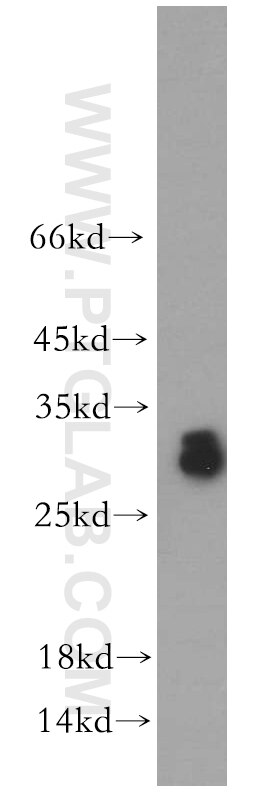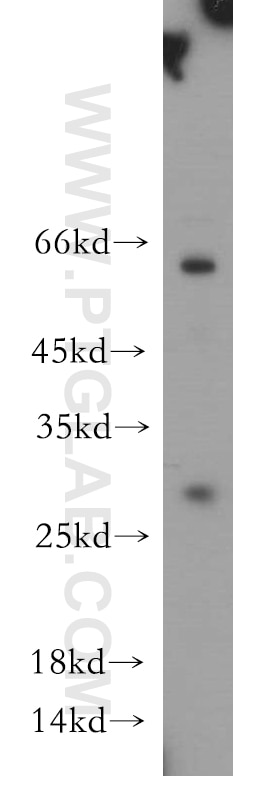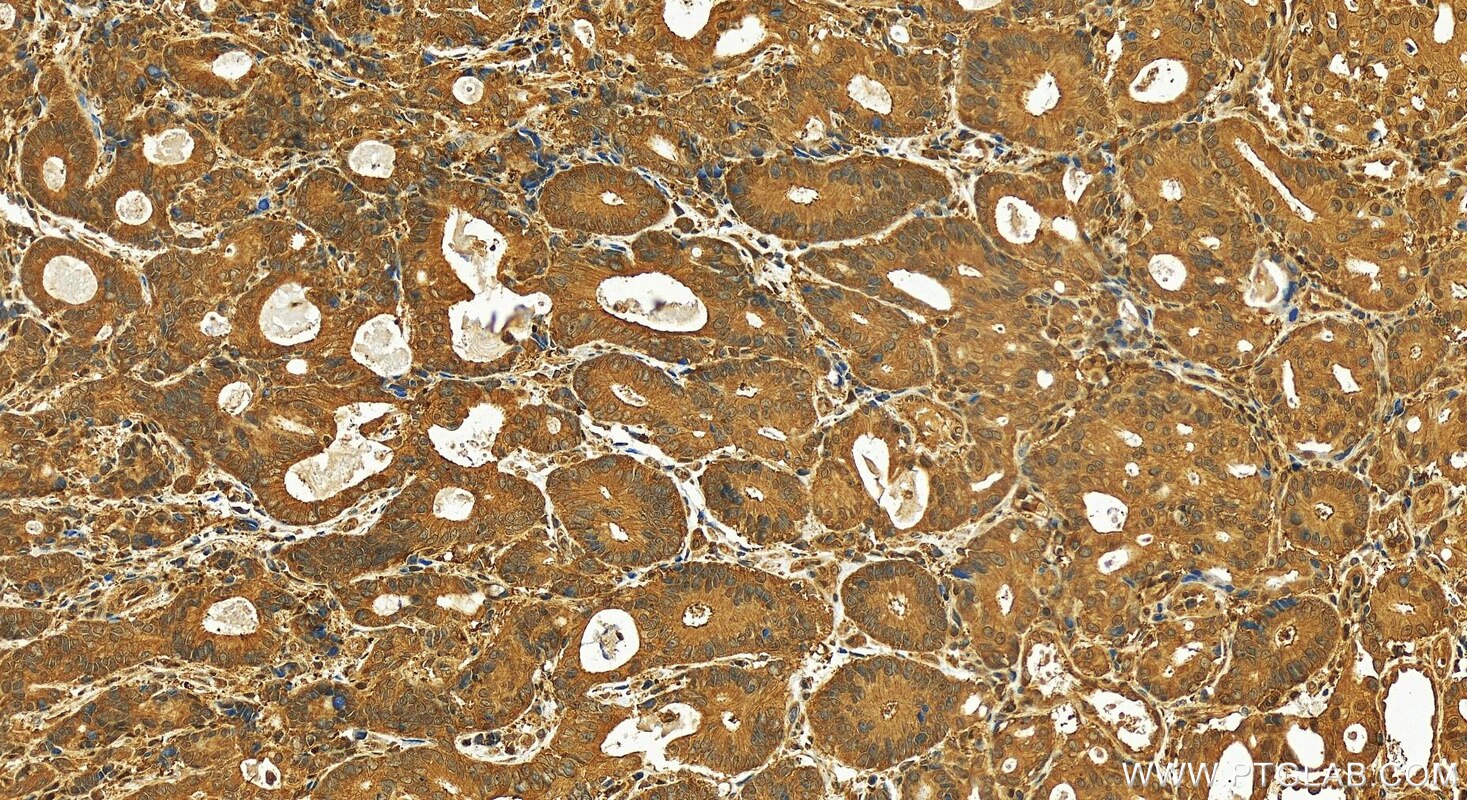Tested Applications
| Positive WB detected in | human testis tissue, HepG2 cells |
| Positive IHC detected in | human stomach cancer tissue Note: suggested antigen retrieval with TE buffer pH 9.0; (*) Alternatively, antigen retrieval may be performed with citrate buffer pH 6.0 |
Recommended dilution
| Application | Dilution |
|---|---|
| Western Blot (WB) | WB : 1:500-1:1000 |
| Immunohistochemistry (IHC) | IHC : 1:50-1:500 |
| It is recommended that this reagent should be titrated in each testing system to obtain optimal results. | |
| Sample-dependent, Check data in validation data gallery. | |
Published Applications
| IHC | See 1 publications below |
Product Information
11952-1-AP targets ASB9 in WB, IHC, ELISA applications and shows reactivity with human samples.
| Tested Reactivity | human |
| Cited Reactivity | human |
| Host / Isotype | Rabbit / IgG |
| Class | Polyclonal |
| Type | Antibody |
| Immunogen |
CatNo: Ag2554 Product name: Recombinant human ASB9 protein Source: e coli.-derived, PGEX-4T Tag: GST Domain: 1-252 aa of BC001244 Sequence: MDGKQGGMDGSKPAGPRDFPGIRLLSNPLMGDAVSDWSPMHEAAIHGHQLSLRNLISQGWAVNIITADHVSPLHEACLGGHLSCVKILLKHGAQVNGVTADWHTPLFNACVSGSWDCVNLLLQHGASVQPESDLASPIHEAARRAYGGNIDHKISHLGTPLYLACENQQRACVKKLLESGADVNQGKGQDSPLHAVARTASEELACLLMDFGADTQAKNAEGKRPVELVPPESPLAQLFLEREGASLPKPKP Predict reactive species |
| Full Name | ankyrin repeat and SOCS box-containing 9 |
| Calculated Molecular Weight | 252 aa, 28 kDa, 32 kDa |
| Observed Molecular Weight | 28-32 kDa |
| GenBank Accession Number | BC001244 |
| Gene Symbol | ASB9 |
| Gene ID (NCBI) | 140462 |
| RRID | AB_10666996 |
| Conjugate | Unconjugated |
| Form | Liquid |
| Purification Method | Antigen affinity purification |
| UNIPROT ID | Q96DX5 |
| Storage Buffer | PBS with 0.02% sodium azide and 50% glycerol, pH 7.3. |
| Storage Conditions | Store at -20°C. Stable for one year after shipment. Aliquoting is unnecessary for -20oC storage. 20ul sizes contain 0.1% BSA. |
Protocols
| Product Specific Protocols | |
|---|---|
| IHC protocol for ASB9 antibody 11952-1-AP | Download protocol |
| WB protocol for ASB9 antibody 11952-1-AP | Download protocol |
| Standard Protocols | |
|---|---|
| Click here to view our Standard Protocols |
Publications
| Species | Application | Title |
|---|---|---|
Molecules Identification of Key Candidate Genes Involved in the Progression of Idiopathic Pulmonary Fibrosis. | ||
Oncol Rep HMQ‑T‑F2 suppresses migration of the human cervical cancer HeLa cells by reversing EMT via the PI3K/Akt signaling pathway. |








